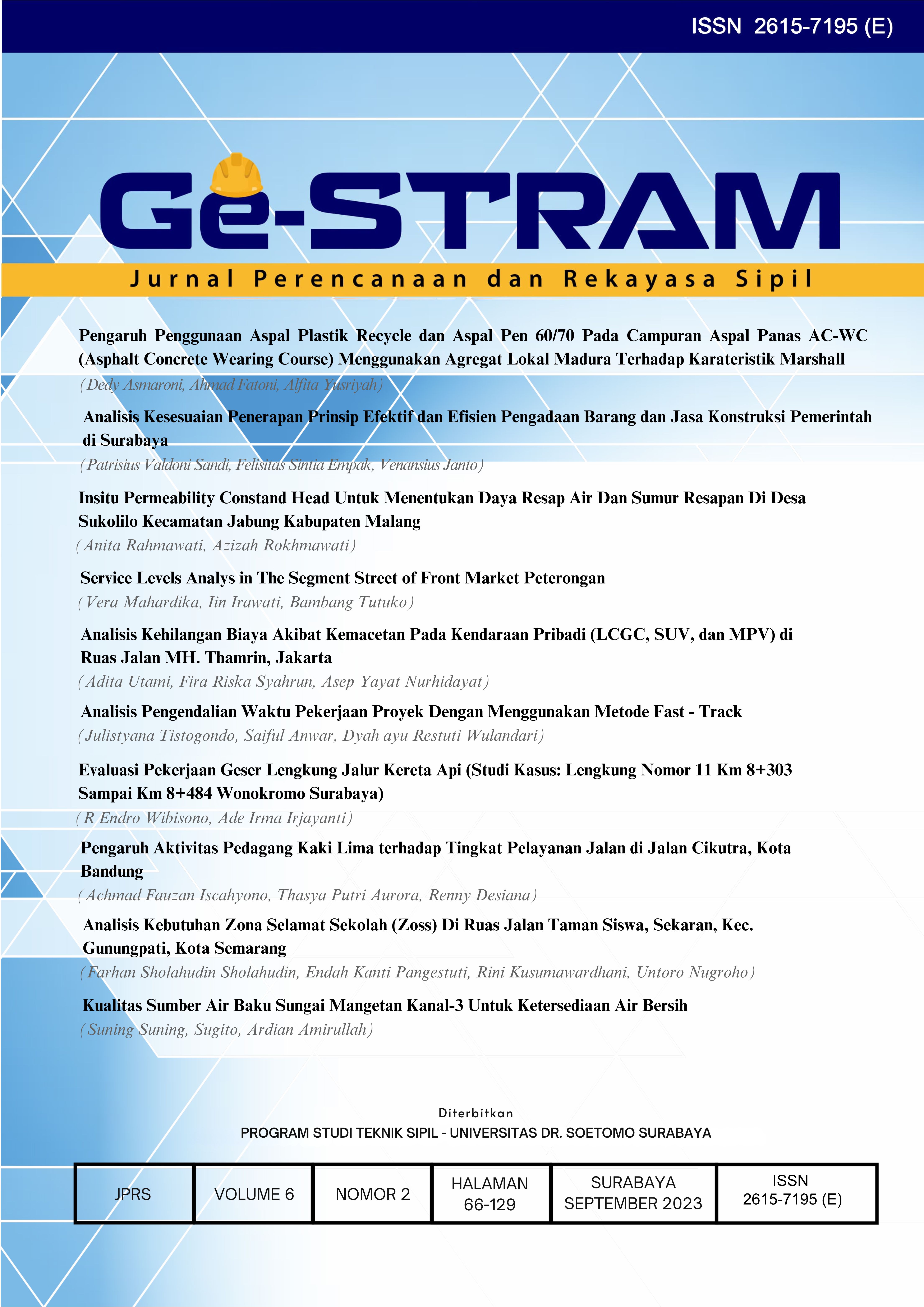Insitu Permeability Constand Head Untuk Menentukan Daya Resap Air Dan Sumur Resapan Di Desa Sukolilo Kecamatan Jabung Kabupaten Malang
 Abstract views: 251
,
Abstract views: 251
,
 PDF downloads: 255
PDF downloads: 255
Abstract
By creating infiltration wells, one can improve the soil's capacity to absorb rainwater. Infiltration wells are holes or wells dug into the ground's surface to catch rainwater and allow it to soak into the soil. Rainwater will be gathered and absorbed into the ground through infiltration wells in order to raise the groundwater table and lessen runoff (Kusnaedi, 2011). The Sunjoto (1988) method is one of several for dimensional infiltration wells. The idea that the volume of incoming water can be determined based on the balance between the water that enters the well and the water that seeps into the earth was created by Sunjoto. The fundamental shape of the infiltration well is designed to reach a porous layer of soil so that water quickly seeps into the ground in order to achieve a balance in the volume of entering and exiting water. Researching the permeability constant head in-situ is one technique to learn how much water is absorbed. The study's findings show that clayey silt, sandy silt, and sandy soil are layered together. The permeability value (K) for L=0.30 m is 7.38 cm/hour, for L=0.70 it is 10.728 cm/hour for very fast impregnation, and for L=1.00 it is 9.612 cm/hour. Results Analysis of absorption discharge (Qo) for channel depth and duration (T) reveals that infiltration wells 1, 2, and 3 all have rising Determination values (R2) of 0.70%, 0.89%, and 0.94%, respectively. The maximum result, which is 90%, is indicated by the determination value (R2) on the two geometric components with K constant head. The model predictions are as accurate as the average of the observed data, according to the test result for the NSE value of 0.99. Between 0.001-0.005, the mean absolute error is negligibly tiny. The RMSE value is low or close to 0, specifically between 0.04 and 0.05 for the geometric factor with K constant head, indicating that the difference between the predicted value and the actual value is relatively small.
References
Suripin, 2004. Sistem Drainase Perkotaan yang Berkelanjutan. Yogyakarta: Penerbit Andi.
Sunjoto,S.1988. Optimasi Sumur Resapan Sebagai Salah Satu Pencegahan Intrusi Air laut.Pros.Seminar PAU-IT-UGM .Yogyakarta
Copyright (c) 2023 Anita Rahmawati, Azizah Rokhmawati

This work is licensed under a Creative Commons Attribution-ShareAlike 4.0 International License.
Authors who publish with this journal agree to the following terms:
- Authors retain copyright and grant the journal right of first publication with the work simultaneously licensed under a Creative Commons Attribution-ShareAlike 4.0 International License that allows others to share the work with an acknowledgement of the work's authorship and initial publication in this journal.
- Authors are able to enter into separate, additional contractual arrangements for the non-exclusive distribution of the journal's published version of the work (e.g., post it to an institutional repository or publish it in a book), with an acknowledgement of its initial publication in this journal.
- Authors are permitted and encouraged to post their work online (e.g., in institutional repositories or on their website) prior to and during the submission process, as it can lead to productive exchanges, as well as earlier and greater citation of published work (See The Effect of Open Access).

This work is licensed under a Creative Commons Attribution-ShareAlike 4.0 International License.















